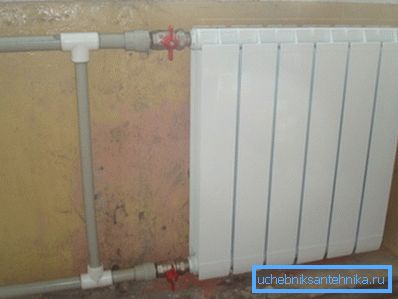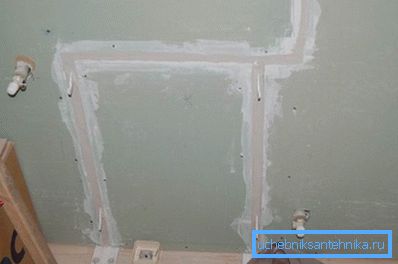Fasteners for heating radiators: criteria for the selection
When installing a heating system, such a work as mounting radiators requires the greatest attention, since these elements have impressive weight and exert a certain load on the walls. To avoid problems and carry out the installation correctly, you should choose high-quality fasteners and correctly install it, this article will be devoted to these issues.

Criteria for the selection of fasteners
To ensure the reliability of the installation, you should choose the best option from the variety of presented products. It is necessary to take into account a number of factors:
| Base Type | Of course, the ideal option is concrete or brick, since these materials are able to withstand very large loads, but in practice we have to deal with other options: plasterboard, aerated concrete, wood, etc. To solve such problems, special fastening technologies are used, since massive structures will not be held without an appropriate fixation. |
| Type of radiators | Everyone knows that the most difficult option is classic cast iron batteries, so if you have a choice, it is better to choose other options: aluminum, steel or bimetal, they are all much easier, therefore, they will be easier to fasten, besides efficiency all of these radiators are no worse than those of cast iron |
| Sizes of products | This factor is more dependent on the floor space and the size of the windows; spacious rooms require much more sections in order to provide comfortable conditions in the winter season. The larger the battery, the more attachment points should be and the higher the requirements for the quality of work |
| Interior features | If you are creating an original project, then a certain type of radiator can be provided, and this can be both standard options and design products that will require the use of an appropriate type of fasteners, best of all if they are included in the package |
Tip! Sometimes special foundation preparation is required at the repair stage, so you will have to consider the location of the elements in order to strengthen the base accordingly.

The main options for work
Consider how to fix the radiator depending on the type of base, since this is the main criterion when working.
Drywall
This is the most difficult option, as the design does not have high bearing properties.
Consider how to fix the heating radiator on drywall:
- The first option is to construct a box around the structure, and the radiators themselves are attached to a solid base. This option is most often used when using products made of cast iron, as the weight of the average size of the product exceeds 50 kilograms. Works are performed as standard: places are planned, the base is drilled, dowels are inserted, then strong brackets.

- If you have lighter radiators, then you can simply strengthen the frame from the inside with a wooden bar with a section of 50x50 or more, the most important thing in this case is to precisely install the reinforcing elements, otherwise there will be little sense from them. In addition, you can arrange the pipes under the casing, but in case of problems you will have to destroy part of the wall.

Tip! If you do not know the exact width of the brackets, you can reinforce the base with two 50 mm thick boards, you can arrange them horizontally or vertically, in this case, if you deviate from the planned arrangement of brackets, nothing terrible will happen.
- Finally, if you have not prepared a wall, then to enhance the resistance to the wall brackets, flooring is also added, so you can ensure stability even with low wall strength.
Concrete, brick and blocks
In this case, components should be selected, guided by the configuration of the battery, and not the type of base, it is strong enough to withstand any load.
Instructions for doing your own hands looks like this:
- Bearing elements of the appropriate configuration are purchased, you can choose the simplest options, the price of which is low, or you can buy adjustable brackets, they are more expensive, but it is also more convenient to work with them.

- Work begins with marking the location of fasteners, while note that the distance to the floor from below and to the window sill from above should be at least 100 mm, and the indent to the wall should be from 3 to 5 cm, based on this, the length is selected. If the fastening is made in aerated concrete, then it is better to use special dowels for this type of base.
- After that, using a perforator, drill holes, while it is important to keep the tool level so that there is no distortion. Then dowels are laid in the wall and the brackets are twisted to the desired level.
- If you use a reflector for a heating radiator, it is necessary to fix it after installing the brackets, so you can position this element correctly and do not damage it when drilling.

- Next, the radiator is hung and its position is checked using a level, if there are misalignments, then the elements are either flexed or adjusted (if these are adjustable options). After that, the level is checked again, and if everything is normal, then pipes can be attached.
Recommendations for the location of elements
This factor is also important, the number of brackets must match the type of design:
- For cast-iron structures with a number of edges from two to nine, it is provided to install one holder at the bottom and two at the top.
- If the number of sections is more, then you need to put at least two brackets at the top and two below., sometimes you can add another one on top if the radiator is very large.

- As for the bimetallic and aluminum versions, most often in the delivery set fasteners are already present., therefore, you only need to install it in accordance with the instructions. If there were no elements, you can purchase a ready-made kit consisting of three saber brackets with dowels.

Conclusion
It is very important to choose reliable elements and install them correctly, as the radiator must be located exactly and keep firmly. The video in this article will help to understand some of the nuances in more detail.